Guneet Bhatia
Guneet Bhatia is an avid reader, healthcare writer, and is currently Director of Patient Care Department, MediGence. She has also been featured on many prominent Healthcare portals such as IBTimes, HCIT Expert, Clinician Today.

 Mar 28, 2023
Mar 28, 2023 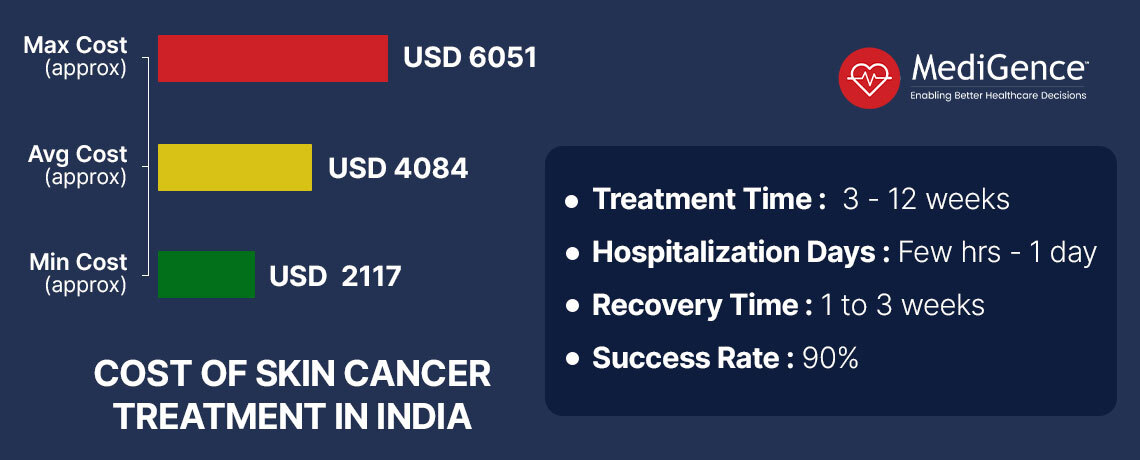
Overview
Skin cancer is cancer that forms commonly due to exposure to the sun. It has three major types: melanoma, squamous cell carcinoma, and basal cell carcinoma. According to studies, approximately 324,635 new cases of oral cancer are diagnosed worldwide each year. Skin Cancer Treatment cost in India ranges from USD 2117 to USD 6051. The curability of oral cancer is around 90%. A patient has to stay in the hospital for 4 days and a total of 21 days as an outpatient in India after skin cancer treatment.
What is Skin Cancer?
The body’s largest organ is the skin. It is made up of several layers like sweat glands, sebaceous glands, nerves, blood vessels, etc protected by two major layers called epidermis and endodermis. The epidermis consists of three layers called squamous cells, basal cella, and melanocytes. The most common type of skin cancer begins in the squamous and basal cells.
Most skin cancers can be triggered by overexposure to UV or ultraviolet rays from the sun, sunlamps, and tanning beds. UV rays can damage the skin by causing sunburn. This damage builds up over time and leads to skin texture changes, premature aging, and cancer.
| City Name | Cost in USD |
|---|---|
| Delhi | $3387 – $7019 |
| Gurgaon | $3388 – $6936 |
| Noida | Starting $4000 |
| Mumbai | $3630 – $7261 |
| Pune | Enquire Now |
| Kolkata | Enquire Now |
| Chennai | $3388 – $4357 |
| Hyderabad | Enquire Now |
| Ahmedabad | Enquire Now |
| Kochi | Enquire Now |

Are you struggling to find what you are looking for?
Get Expert's CallbackHow Does Skin Cancer Look Like?
| Treatment Options | Cost in USD |
|---|---|
| Curettage and Electrodessication | Enquire Now |
| Surgical Excision | $2500 – $3000 |
| Mohs Surgery | $2000 – $3000 |
| Radiation Therapy | $3500 – $5500 |
| Chemotherapy (per cycle) | $300 – $2000 |
| Cryosurgery | $3500 – $4000 |
| Photodynamic therapy (for a single treatment) | $100 – $4000 |
| Biological Therapy | Enquire Now |

Are you struggling to find what you are looking for?
Get Expert's CallbackDiagnostics Test Costs for Skin Cancer in India
It is sometimes difficult to differentiate between non-cancerous and cancerous skin cancer. A dermatoscope (magnifying glass) is used to examine the area closely. A skin sample is taken from a locally numbed suspected area and sent for laboratory analysis.
| Diagnostic Tests | Cost in USD |
|---|---|
| Biopsy | $50 – $300 |
| CT Scan | $60 – $120 |
| MRI | $60 – $180 |
| CLSM | Enquire Now |
1. Biopsy: It costs USD 50- USD300
2. Computational Tomography (CT Scan): Axial CT Scan or CAT is an examination that utilizes x-rays and computers to form detailed images of the insides of the body. It is hardly ever used for basal cell cancers and for squamous cell cancers (if they are detected early). It costs USD 60 -USD 120
3. Magnetic Resonance Imaging (MRI): In this, magnetism and radio waves are used to produce images of the insides of the body from all angles and show the soft tissues very clearly. It is very useful for detecting non-melanoma skin cancer that affects areas like the eyes. It costs USD 60- USD 180
4. Confocal Laser Scanning Microscopy (CLSM): In this, laser light is used to create images layer by layer of tissues without harming the skin. It costs USD
Factors Affecting Skin Cancer Treatment in India
Stages wise Treatment Options for Skin Cancer in India
>>Stage 0: It is also called in situ melanoma. This type of cancer is confined to the top skin layer or the epidermis, which means cancer has not spread to the second skin layer or the dermis. It is not more than 2mm. It is not considered to be invasive melanoma. Cancer has not spread to lymph nodes. The treatment option can be surgery. It costs USD
It is also called TisNOMO.
>>Stage 1: It is present in the epidermis and dermis. The tumor is 2 mm thick and may not or may have ulceration. Cancer may not have spread to lymph nodes. It is not invasive. Ulceration occurs when the epidermis covering the part of primary melanoma is not intact. This can only be seen under a microscope. The treatment option for this is wide local excision.
>>Stage 2: Cancer is in the epidermis and dermis layers. Ulceration can be seen but there is no evidence of spreading to the lymph nodes or any other body parts. The is a high risk of local recurrence for distant and regional metastases. The treatment options include surgery, sentinel lymph node biopsy, and immunotherapy.
>>Stage 3: In this, the tumor has spread to the regional lymph nodes or in-transit deposits are formed but there may not be metastasis to other body parts. It has spread beyond the local or primary tumor to the nearby lymph nodes.
>>Stage 4: In this, cancer has spread beyond the original site of the tumor and beyond the regional lymph nodes to further areas in the body. The distant regions include lungs, lymph nodes, bone, liver, brain, and/or intestines.
Types of Skin Cancer
1. Basal Cell Carcinoma (BCC): This is the most common form of skin cancer. It usually develops in fair-skinned people but can affect anyone.
2. Squamous cell carcinoma (SCC): After BCC, SCC is the most common kind of skin cancer. Light-skinned people are mostly affected by this but it can affect anyone with darker skin tones as well.
3. Melanoma: It is often called the most serious form of cancer because it is prone to spreading. Melanoma can develop within an already present mole on the skin or can appear as a dark spot suddenly that seems different from other spots.
Warning signs for melanoma can be checked through ABCDEs of melanoma-
4. Cutaneous T-Cell Lymphoma: T cells help in preventing infections. This type of cancer develops in the white blood cells. They are present on the skin as a first line of defense. It can be of two types-
5. Dermatofibrosarcoma protuberans (DFSP): It is a rare form of skin cancer. It develops in the middle layer or dermis of the skin, grows gradually, and does not spread to other body parts. If untreated, DFSP can grow deep into bone, muscle, and fat.
6. Merkel Cell Carcinoma: It is a rare form of skin cancer and is also called neuroendocrine carcinoma. It usually appears to be a bluish-red nodule or flesh-colored. It often develops because of a weak immune system and years of sun exposure in older people. It can appear on the neck, face, and head.
7. Sebaceous Carcinoma: It is a rare form of skin cancer and is aggressive. It forms in the eyelids and the sebaceous glands on the skin. A tumor that is round, painless, and firm develops on the lower or upper eyelid.
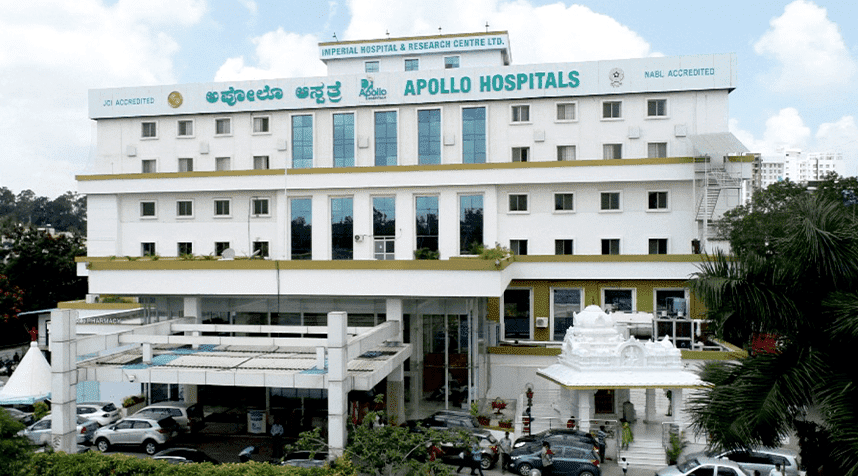
Apollo Hospital has been accredited by NABH and JCI credentials. It has a 250-bed capacity. It has technologies like 3 Tesla MRI, 120 slice CT angiogram, 4-D Ultrasound for 4-dimensional sonography, Digital Fluoroscopy, Gamma Camera, etc. It also houses The Minimal Access Surgery Centre (MASC) center of excellence.
>>Sarvodaya Hospital and Research Centre, Faridabad
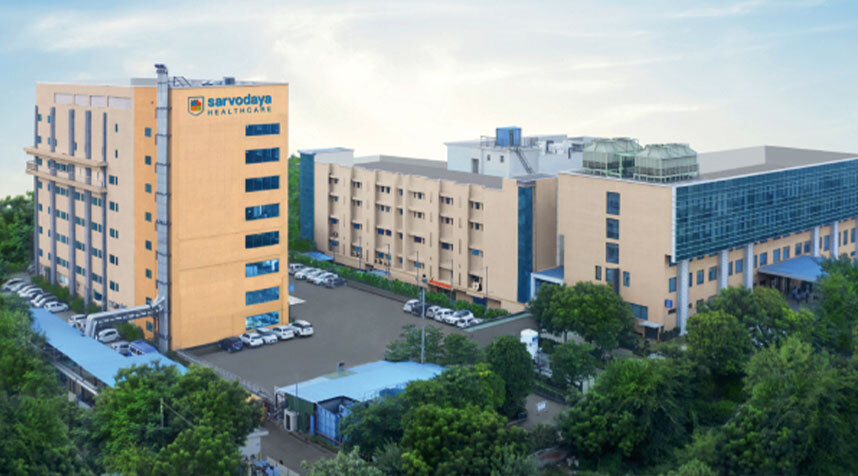
Sarvodaya Hospital and Research Centre have been accredited with NABL and NABH credentials. It has a 500-bed capacity and 65 ICU beds. It has technologies like 128 Slice CT scans, 500 MA X-Ray, 1.5 Tesla MRI, Mammography facilities, Cancer Centres, etc. Special oncology centers for all kinds of cancer have been a recent addition.
>>Yashoda Hospital, Malakpet
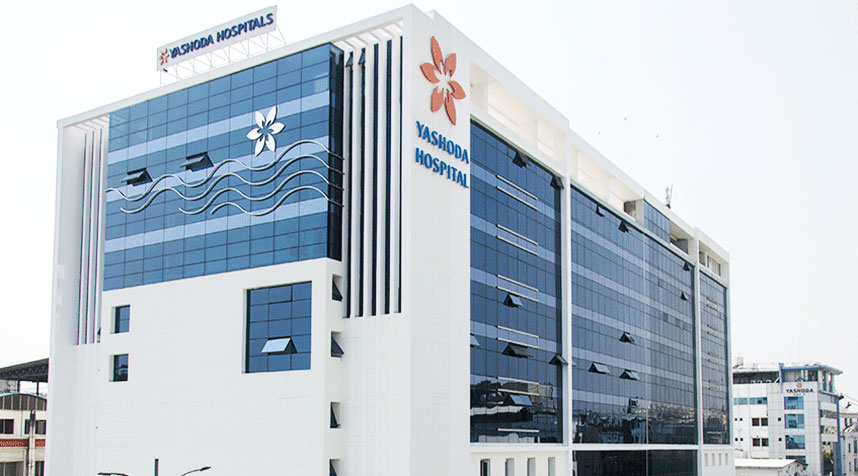
Yashoda Hospital has been accredited with NABL and FICCI credentials. It has 1710 bed capacity across 3 of its own hospitals and 3 cancer institutes. It houses high-tech labs and modular operation theaters, Digital X-Rays, Ultrasonography, CT 64 Slices MRI, etc.
>>Max Super Speciality Hospital, Vaishali
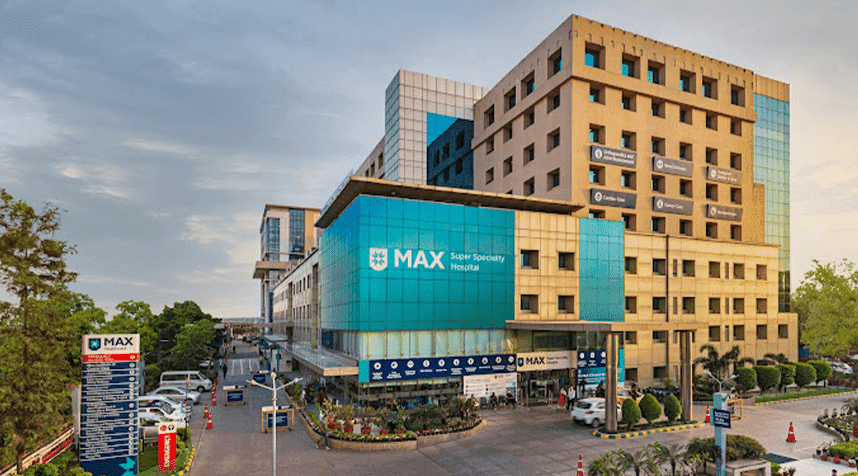
Max Super Speciality Hospital has been accredited with NABH and NABL credentials. It has a 370-plus capacity and 15-plus specialties. 14 high-end modular operation theatres, 3D (4D) imaging, 3.0 Tesla digital boundaries MRI, Da Vinci Xi Robotic System, etc.
>>Indraprastha Apollo Hospital, Delhi
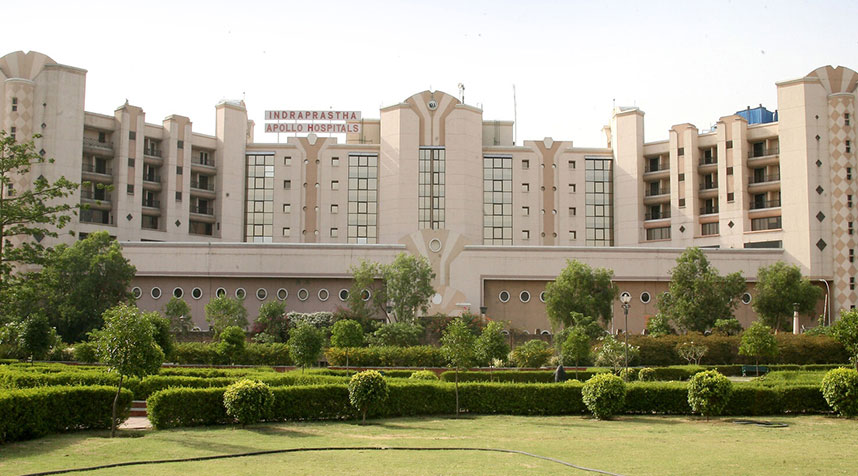
Indraprastha Apollo Hospital has been accredited with ISO and JCI credentials. It has technologies like 64-Slice Scan coupled with data acquisition, Spect-CT, Pet-CT, Fibroscan, NovalistTx, HDR-Brachytherapy, DSA Lab, etc. It has online doctor consultations and rehabilitation facilities.

Are you struggling to find what you are looking for?
Get Expert's CallbackFacilities provided by hospitals in India
1. Dr. Hitesh Dawar
Musculoskeletal Oncology, Max Super Speciality Hospital, Shalimar Bagh
Experience: 10 years

Qualification: MBBS, DNB
2. Dr. Arun Goel
Surgical Oncologist, Max Super Speciality Hospital, Vaishali
Experience: 24 years
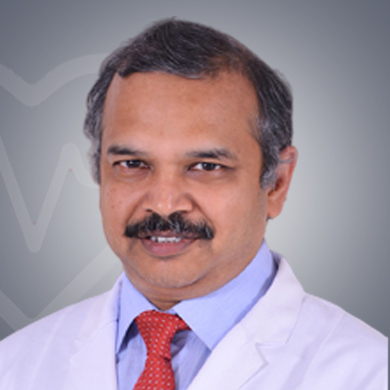
Qualification: MBBS, MS
3. Dr. Priya Tiwari
Medical Oncologist, Artemis Health Institute, Gurgaon
Experience: 18 years

Qualification: MBBS, MD, DM
4. Dr. Vivek Mangla
Oncologist, Max Super Speciality Hospital, Vaishali
Experience: 17 years

Qualification: MBBS, MS, MCh
5. Dr. Rajender Kaur Saggu
Surgical oncologist, Max Super Speciality Hospital, Shalimar Bagh
Experience: 15 years

Qualification: MBBS, MS

Are you struggling to find what you are looking for?
Get Expert's CallbackQualifications Required for Doctors to Treat Skin Cancer in India
Signs and Symptoms of Skin Cancer
There are various signs and symptoms of skin cancer:
1. Basal Cell Carcinoma-
2. Squamous Cell Carcinoma-
3. Melanoma-
4. Merkel Cell Carcinoma-
5. Sebaceous gland Carcinoma-
Causes of Skin Cancer
Skin cancer is caused when mutations occur in the DNA of the skin cells. Due to this, the skin cells grow out of control and form a mass called a tumor or cancer.
Precautions for Skin Cancer
There is a 95% survival rate for the 5-year mark for people diagnosed and treated before melanoma spreads to the lymph nodes. If it spreads to the lymph nodes, the survival rate is reduced to 68%. If cancer spreads to distant organs, the survival rate reduces further to 30%.
Why do foreigners choose India for Skin Cancer Treatment?
Foreigners choose India for its affordable cost of treatment, world-class infrastructures of hospitals, and highly skilled medical professionals.
Frequently Asked Questions
Before going in for skin cancer treatment in a hospital, one should consider factors like location, diagnostic services offered, intensive care units, post-operative care services, accreditation of the hospital, type of hospital (government or private), etc.
One should consider the following factors before choosing a doctor qualification or expertise of the doctor, the technology used, the surgery type, patient feedback, survival rate, etc.
The cost for skin cancer treatment in India costs USD 3388 to USD 12707
Melanoma is a type of skin cancer that develops in the melanocytes (cells that contain melanin, the pigment that gives skin its characteristic color). Most melanomas still have cells that produce melanin and hence, the tumors are usually black or brown. But some melanomas do not produce melanin and hence, appear tan, white, and pink. Although melanomas can develop anywhere, the common areas for melanoma to develop are the chest, back, neck, soles of feet, and legs. It is less common than other types of skin cancer but is more harmful as it spreads to other body parts if not diagnosed and treated early.
Immunotherapy as a treatment option will be discussed by the doctor depending on the stage of skin cancer.
Too much UV radiation from the sunbeds or the sun can lead to DNA damage in the cells. If there is enough DNA damage in the cells, it causes the cells to grow uncontrollably and form a tumor, and ultimately skin cancer. UV light has two types:
There are different types of skin cancer with varying signs, shapes, and sizes. Sometimes they resemble other skin conditions. Many skin cancers tend to appear on the areas of the body that get a lot of sun exposure. But skin cancers can appear in areas of the body. Some common ways skin cancer may appear are:
References:

Guneet Bhatia is an avid reader, healthcare writer, and is currently Director of Patient Care Department, MediGence. She has also been featured on many prominent Healthcare portals such as IBTimes, HCIT Expert, Clinician Today.
(+1) 424 283 4838